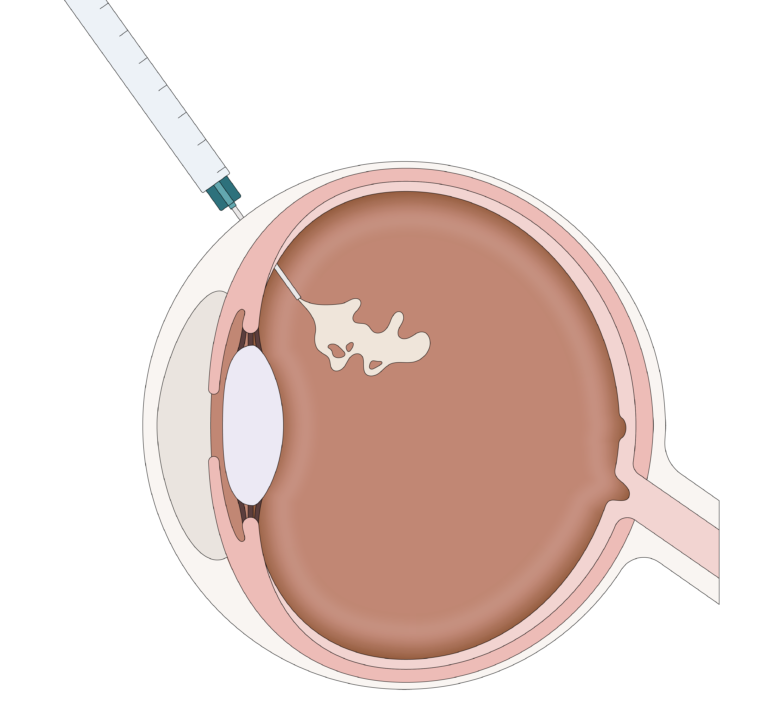Retinal Treatment
Vitamins
Treatment can’t reverse dry macular degeneration but this doesn’t mean patients will eventually lose all sight. Dry macular degeneration usually progresses slowly and many people with the condition can live relatively normal, productive lives, especially if only one eye is affected.
By increasing antioxidant vitamins (vitamin C, vitamin E, vitamin A/Beta carotene), copper, and zinc intake, it may reduce the progression of dry macular degeneration to vision loss in patients with intermediate macular degeneration, according to research by the National Eye Institute (NEI). For people with early-stage dry macular degeneration, there’s no evidence that these vitamins provide a benefit.
Some vitamin supplements may have complications and risks so some patients may prefer to make lifestyle changes rather than take supplements. Others may wish to combine supplements with lifestyle changes. Make sure to consult Dr. Youssef so he can help you make informed decisions based on your medical history.
Intravitreal Injections
An intravitreal injection is a procedure to place a medication directly into the space in the back of the eye called the vitreous cavity, which is filled with a gel-like fluid called the vitreous humor. Intravitreal injections are used to treat a variety of retinal conditions.
Some of the intravitreal medications we offer at PVSC are:
- OZURDEX® (dexamethasone)
- LUCENTIS® (ranibizumab)
- Avastin® (bevacizumab)
- JETREA® (ocriplasmin)
- EYLEA® (aflibercept)
- Triesence® (triamcinolone acetonide)
- Beovu® (brolucizumab)
- Vabysmo® (faricimab)
Sometimes a steroid medication is used and other times you may be given an anti-VEGF medication like Avastin®. This medication works by blocking a molecule known as vascular endothelial growth factor (VEGF). VEGF is what promotes the growth of abnormal blood vessels in the eye which can affect your vision so by blocking it we can reduce the swelling, leakage, and growth of unwanted blood vessel growth in the retina which may improve how well you see. Intravitreal injections may be given once or every few weeks at regular intervals, as determined by Dr. Youssef.

Surgery
Laser Surgery
Laser surgery involves a very bright, finely focused light that passes through the eye and shrinks abnormal new vessels and reduces swelling. Treatment is often recommended for people with macular edema, proliferative diabetic retinopathy (PDR), and neovascular glaucoma. Laser surgery is usually performed in an office setting. A contact lens is temporarily placed on the eye to focus the laser light on the retina with pinpoint accuracy.
For a retinal tear for example, Dr. Youssef directs the laser beam and makes burns around the tear, creating scarring that usually “welds” the retina to the tissue below. When a retinal tear hasn’t yet progressed to detachment, this can usually prevent retinal detachment and preserve almost all of your vision. Surgery is almost always used to repair a retinal tear, hole or detachment.
With laser surgery for macular edema, tiny laser burns are applied near the macula to reduce fluid leakage (called macular photocoagulation). The main goal of treatment is to prevent further loss of vision by reducing the swelling of the macula. It is uncommon for people who have blurred vision from macular edema to recover normal vision, although some may experience partial improvement.
In proliferative diabetic retinopathy (PDR), the laser is aimed at all parts of the retina except the macula (called panretinal photocoagulation). This treatment causes abnormal new vessels to shrink and often prevents them from growing in the future. It also decreases the chance that vitreous bleeding or retinal distortion will occur. Laser surgery does not cure diabetic retinopathy and does not always prevent further loss of vision.
Vitrectomy
A vitrectomy is a surgical procedure often performed on an outpatient basis or with a short hospital stay. During vitrectomy, an operating microscope and small surgical instruments are used to remove blood and scar tissue caused by abnormal vessels in the eye. Removing them allows light rays to focus on the retina again so vision is improved. By removing the abnormal vessels that caused the bleeding, a vitrectomy also prevents future leaks. Removal of the scar tissue helps the retina return to its normal location. A gas or oil bubble in the vitreous space will push the retina against the tissue below so you may be told to keep your head in certain positions while the bubble helps to heal the retina.
